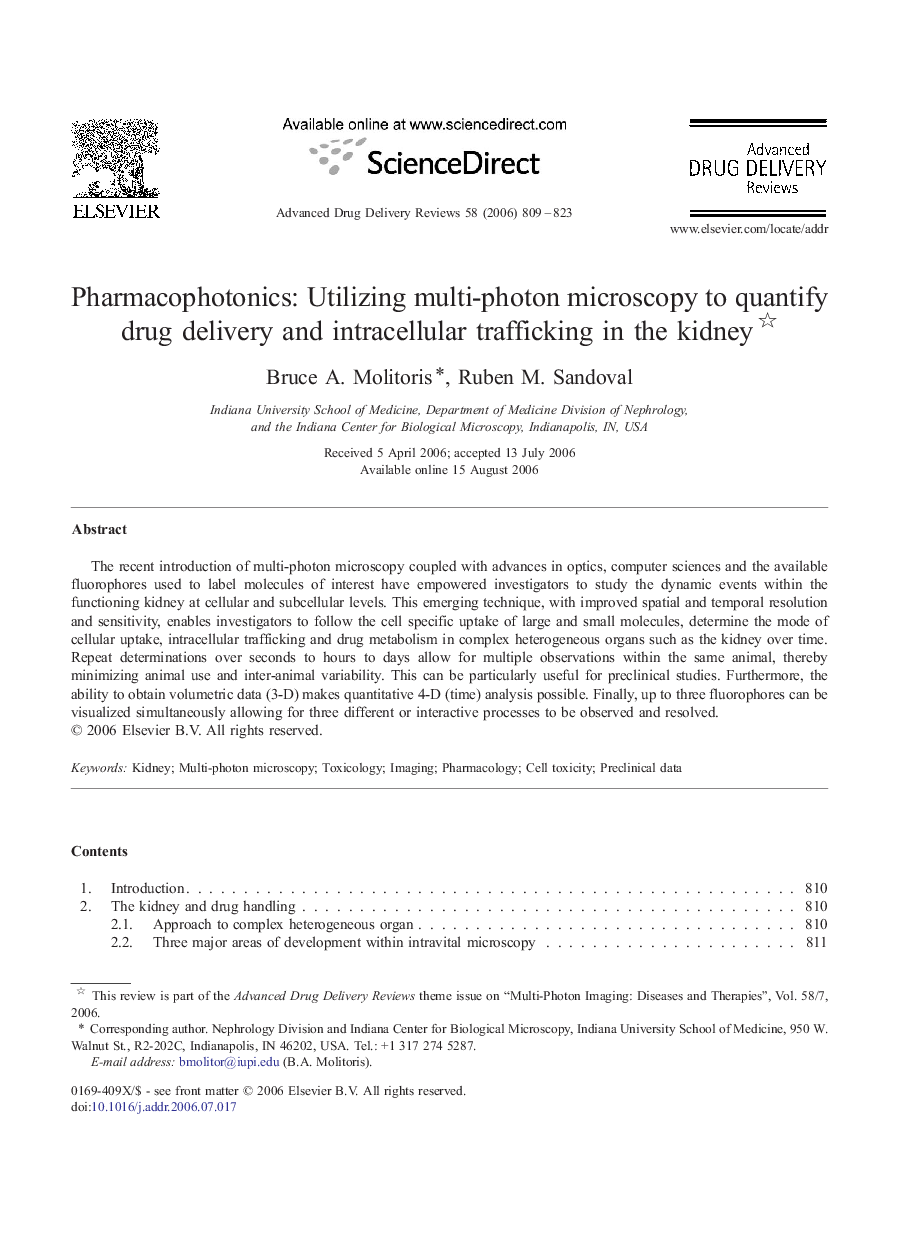| Article ID | Journal | Published Year | Pages | File Type |
|---|---|---|---|---|
| 2072022 | Advanced Drug Delivery Reviews | 2006 | 15 Pages |
The recent introduction of multi-photon microscopy coupled with advances in optics, computer sciences and the available fluorophores used to label molecules of interest have empowered investigators to study the dynamic events within the functioning kidney at cellular and subcellular levels. This emerging technique, with improved spatial and temporal resolution and sensitivity, enables investigators to follow the cell specific uptake of large and small molecules, determine the mode of cellular uptake, intracellular trafficking and drug metabolism in complex heterogeneous organs such as the kidney over time. Repeat determinations over seconds to hours to days allow for multiple observations within the same animal, thereby minimizing animal use and inter-animal variability. This can be particularly useful for preclinical studies. Furthermore, the ability to obtain volumetric data (3-D) makes quantitative 4-D (time) analysis possible. Finally, up to three fluorophores can be visualized simultaneously allowing for three different or interactive processes to be observed and resolved.
